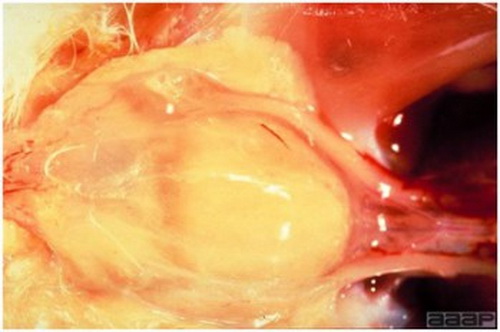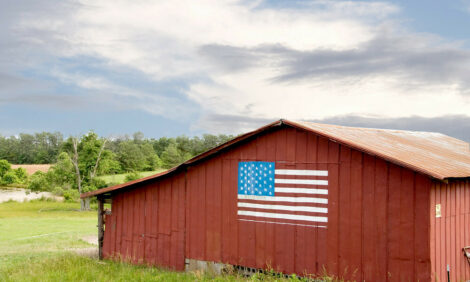



IBD Vaccination: HVT Vector Vaccine or Live?
GLOBAL - Herpesvirus of turkey (HVT) vector vaccines have made a valuable contribution to the poultry industry by providing another option for disease prevention, but they have also created a dilemma because only one HVT vaccine can be used at a time.When two HVT vaccines are administered, whether the vaccines are recombinant or not, one will always out-replicate and prevail over the other, and the one that loses will have reduced efficacy. Consequently, if you’re vaccinating your flocks against several diseases, you may be faced with choosing between an HVT vector vaccine for Newcastle disease virus (NDV), infectious laryngotracheitis virus (ILTV) or infectious bursal disease virus (IBDV).
One solution is to use an immune-complexed live vaccine to help protect against IBDV. This allows use of an HVT vector vaccine for NDV or ILTV.
To confirm the efficacy of this approach, we initiated university and field studies to compare the performance of Bursaplex® — a classic live vaccine complexed with antibodies — to an HVT vector vaccine for IBDV.
University study
With Zoetis sponsorship, researchers at Auburn University vaccinated 240 specific-pathogen-free leghorns in ovo with either a single dose of Bursaplex or Vaxxitek® HVT+IBD.1 They left a third group unvaccinated to provide controls.
The researchers then challenged the birds with classic IBDV by eye drop, at 13 days of age. They determined the level of protection 5 days later based on the presence of acute bursal lesions (Figure 1) as well as splenomegaly, which indicates viremia.

Figure 1. Bursal edema
Protection from bursal lesions was 100% in the group that received Bursaplex, 78.3% in the group that received Vaxxitek HVT+IBD and 8.3% in unvaccinated controls. The difference between groups was statistically significant (p ≤ 0.05).
Protection against splenomegaly was 95% in the group that received Bursaplex compared to 76.7% in the group that received Vaxxitek HVT+IBD. Protection against splenomegaly in unvaccinated controls was only 8.3%. Here again, the difference between each group was statistically significant (p ≤ 0.05).
Weight gain post challenge was 45.9 g in the group that received Bursaplex, followed by 42.6 g in the group that received Vaxxitek HVT+IBD and 21.0 g in unvaccinated controls.
Complete bursal protection in birds vaccinated with Bursaplex demonstrates that active immunity was established by 13 days of age. In contrast, Vaxxitek HVT+IBD established immunity in about three-quarters of vaccinates by 13 days.
These results also demonstrate that splenomegaly is a good indicator of active IBDV viremia in the presence of acute bursal lesions.
Field trial
The field trial comparing Bursaplex to Vaxxitek HVT+IBD was conducted in the winter-spring of 2014 at a southeastern US broiler complex that processes nearly 2 million birds weekly.2
The producer had reported a three-point improvement in feed conversion in birds that received Vaxxitek HVT+IBD compared to unvaccinated flocks, even though flocks were still experiencing IBDV challenges by 3 weeks of age. Polymerase chain reaction (PCR) testing was done and indicated the field challenge was primarily due to the AL-2 strain of IBDV.
For the field trial, Bursaplex instead of Vaxxitek HVT+IBD was administered to one-third of flocks placed weekly for a total of 9 weeks.
The performance in birds vaccinated with Bursaplex indicated the vaccine was at least as effective as Vaxxitek HVT+IBD for helping to protect against a high IBDV challenge (Table 1). Using computer-imaging analysis, the researchers also found that both vaccines spared flocks from more severe lymphoid depletion. In addition, the feed-conversion ratio adjusted to a 4-lb bird favored Bursaplex by about one point.
Table 1. Results of field trial comparing Bursaplex with Vaxxitek HVT+IBD

*Birds vaccinated with Bursaplex were marketed about one-half day older and were a bit heavier.
**Feed-conversion ratio (FCR) adjusted to a 4-lb bird favored Bursaplex by about one point.
Flexibility
Depending on the situation, it’s sometimes preferable to use a recombinant HVT for either NDV or ILTV rather than a modified-live vaccine. Bursaplex gives you the flexibility to do this while maintaining a solid IBD program from a single hatchery vaccination.
Chickens with low maternal immunity to IBDV are susceptible to early infections and permanent immune suppression. Unvaccinated flocks will also keep the field pressure high as they continue to replicate wild viruses. The HVT+IBD vector vaccine can lessen the amount of bursal atrophy compared to unvaccinated birds. However, PCR surveys show it often doesn’t prevent field infections.2,3 Consequently, infection pressure can remain high and continue to challenge birds as early as 2 to 3 weeks of age.
Bursaplex is coated with antibodies to help protect the embryo or young chicks from infection by the vaccine. It starts replicating at the precise moment each bird is ready to be immunized — in other words, when the bird’s maternal immunity has fallen and the bird has become vulnerable to field infection. Although some bursal atrophy is typically seen between 3 and 4 weeks of age, field infections can be reduced or can be prevented.
We’ve shown that Bursaplex helps provide IBDV protection that is at least equal to the protection provided by an HVT vector vaccine. It can, therefore, help protect against costly IBDV infections and resulting losses while providing the option of using an HVT vector vaccine for NDV or ILTV.
1 Data on file, Study Report No. 21-12-70AQO, Zoetis Inc.
2 Data on file, Study Report No. 014-14-70AQO, Zoetis Inc.
3 Data on file, Infectious Bursal Disease Virus PCR and Sequencing Report July 08, 2014. Case: C-05262014-00001, Zoetis Inc.
Kalen Cookson, DVM, MAM
Director of clinical research
Zoetis Inc.










